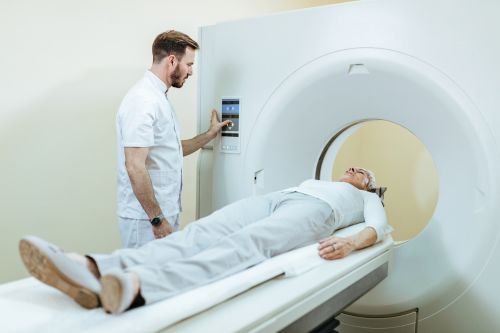Table of Contents
- Introduction to Radiography courses
- Characteristics of a leading global radiology course
- The diverse landscape of Radiography courses
- Master of Diagnostic Radiography at the University of Sydney
- MSc Radiography at Cardiff University
- Master of Magnetic Resonance Technology at the University of Queensland (UQ)
- Bachelor of Applied Science in Diagnostic Radiography at The University of Sydney
- Bachelor of Medical Radiation Science at Charles Sturt University
- Careers and salary range for different roles
- Where to study radiography
- Key takeaways
- FAQs
Introduction to Radiography courses
Enrolling in a Radiography course requires the study of the complex world of medical imaging, where accuracy and knowledge are essential to patient care. It’s critical for everyone thinking about or enrolled in a radiography school to know what awaits them after graduation. This blog will walk you through the aspects of Radiography courses and colleges where students can pursue this discipline as well as offer advice on possible career choices.
Characteristics of a leading global radiology course
Aspiring radiographers seeking a global perspective and excellent education opportunities must look for the following characteristics
- Comprehensive curriculum: A leading global radiology course should encompass a comprehensive curriculum that goes beyond the basics. It should cover a wide range of imaging modalities, including traditional X-rays, CT scans, MRIs, and emerging technologies.
- Clinical exposure: Practical experience is paramount in radiography education. A distinguished radiology course provides ample opportunities for clinical exposure, ensuring students develop hands-on skills and familiarity with real-world scenarios.
- Advanced technology: The field of medical imaging is dynamic, with technology constantly evolving. A leading radiology course provides access to advanced imaging equipment and exposure to the latest advancements in radiographic technology.
- Research opportunities: Institutions that foster a culture of research contribute significantly to the advancement of medical imaging. A leading radiology course should encourage and provide avenues for students to engage in research projects, contributing to the scientific community.
- Global recognition and accreditation: Reputed organizations’ accreditation adds credibility to a radiology course. Leading institutions often have global recognition, ensuring graduates meet international standards and are prepared to excel in a competitive job market.
The diverse landscape of Radiography courses

From X-rays to more sophisticated modalities such as CT scans and MRIs, Radiography courses thoroughly examine medical imaging techniques. A variety of specialized courses are available for aspiring radiographers to customize their education to fit their particular areas of interest. The following is a list of several well-known radiology courses-
Master of Diagnostic Radiography at the University of Sydney
In order to enable effective patient diagnosis and treatment, the Master of Diagnostic Radiography program at the University of Sydney teaches you how to work with a variety of advanced imaging technologies. Students who wish to become registered diagnostic radiologists can apply for this course. Working closely with radiologists and utilizing a variety of modalities to give images and data for the diagnosis and treatment of injury or disease is something you will learn from this course.
MSc Radiography at Cardiff University
Accredited by the Society and College of Radiographers, the MSc program in Radiography at Cardiff University helps you advance your clinical expertise and broaden your knowledge in this rapidly evolving field. The skills you acquire are recognized internationally and are transferable to all healthcare organizations. This course is for students who hold a valid qualification as a therapeutic radiographer, diagnostic radiographer, or other healthcare professional. Its flexible learning methodology allows students to select the modules that most closely match their needs.
Master of Magnetic Resonance Technology at the University of Queensland (UQ)

Students can become in-demand radiologists both domestically and internationally by gaining a thorough understanding of the physics and technology underlying magnetic resonance. The 1.5-year, full-time Master of Magnetic Resonance Technology program at UQ is for professionals who wish to learn more about the advanced physics and technology related to magnetic resonance. This course offers the most extensive and sophisticated array of magnetic resonance equipment available in the Southern Hemisphere. Experienced radiographers, doctors, medical physicists, chemists, and engineers teach this course in a multidisciplinary setting. The course consists of the physics of magnetic resonance and image formation, the parts of contemporary MRI scanners, and the specialized practical skills necessary for a successful career in this field.
Bachelor of Applied Science in Diagnostic Radiography at The University of Sydney
The Bachelor of Applied Science (Diagnostic Radiography) degree offers you with the knowledge and skills to use the latest technology. It also helps produce high-quality medical images that can assist medical specialists and practitioners in describing, diagnosing, monitoring, and treating injury or illness. This course is for those looking to pursue a career in a wide range of health settings where you will use technologies to produce medical images to assist in accurate diagnosis and sound patient care. The Bachelor of Applied Science (Diagnostic Radiography) is an undergraduate coursework degree that will prepare you for professional practice as a diagnostic radiographer, developing your skills in the use of the latest technology to produce high-quality medical images that can assist medical specialists in describing, diagnose, monitor and treat injury or illness.
Bachelor of Medical Radiation Science at Charles Sturt University
The discipline of medical radiation science integrates science, health, and anatomy or physiology and is characterized by diversity, challenge, and progress. Charles Sturt University’s Bachelor of Medical Radiation Science program provides the professional skills and theoretical understanding necessary to work as a licensed medical radiation scientist. This medical radiation science degree offers a high career success record in the sector. Specialists with experience in the field teach this course. Students also have the option to specialize in radiation treatment, diagnostic radiography, nuclear medicine, and molecular imaging.
Careers and salary range for different roles
Upon completing a Radiography course, individuals can pursue various career paths within the broader field of medical imaging. Let’s explore some of the key roles and their associated salary ranges-
| Diagnostic radiographer | Responsibilities- Conducting X-rays and other diagnostic imaging procedures.Salary range- Starting from $50,000 to $70,000 annually. |
| MRI technologist | Responsibilities- Operating MRI equipment and ensuring high-quality imaging.Salary Range- $60,000 to $80,000 annually. |
| CT technologist | Responsibilities- Performing CT scans and assisting in image interpretation.Salary range- $55,000 to $75,000 annually. |
| Radiation therapist | Responsibilities- Administering radiation treatment to cancer patients.Salary range- $70,000 to $90,000 annually. |
| Nuclear medicine technologist | Responsibilities- Conducting nuclear medicine procedures and analyzing results.Salary range- $65,000 to $85,000 annually. |
Please note that salaries can differ based on factors such as location, level of experience, and the specific healthcare facility or organization.
Where to study radiography
Selecting the right institution for your Radiography course is crucial for a well-rounded education. Here are some esteemed institutions globally known for their radiography programs-
- Johns Hopkins School of Medicine (USA)
- University College London (UK)
- University of Sydney (Australia)
- Karolinska Institute (Sweden)
- University of Toronto (Canada)
These institutions offer a solid foundation for aspiring radiographers, combining academic excellence with hands-on training.
Key takeaways
- The demand for qualified radiographers is on the rise, offering abundant opportunities for career advancement and specialization.
- Radiography courses cover a spectrum of imaging techniques, from traditional X-rays to advanced modalities such as CT scans and MRIs.
- Global recognition and accreditation from reputed organizations add credibility to the course, preparing graduates for success in the international job market.
If you liked reading this blog, then share your thoughts in the comments section below. If you have any questions or would like more information on international programs, please don’t hesitate to reach out to us.
Liked this blog? Read next: Computer science engineering subjects | All you need to know!
FAQs
Q1. Can I specialize further after completing a Radiography course?
Ans- Yes, many professionals choose to pursue additional certifications or advanced degrees to specialize further in areas such as interventional radiology, pediatric radiography, or musculoskeletal imaging.
Q2. Do Radiography courses include professional development opportunities?
Ans- Radiography courses emphasize professional development, offering insights into ethical standards, continuing education, and involvement in professional organizations. These components contribute to the ongoing growth of radiography professionals.
Q3. Can I Transfer Credits from a Radiography Course to Pursue Further Education?
Ans- Many accredited Radiography courses allow for credit transfers, facilitating the pursuit of advanced degrees or certifications in related fields. Please check whether the institute allows a credit transfer facility and then opt for it.






